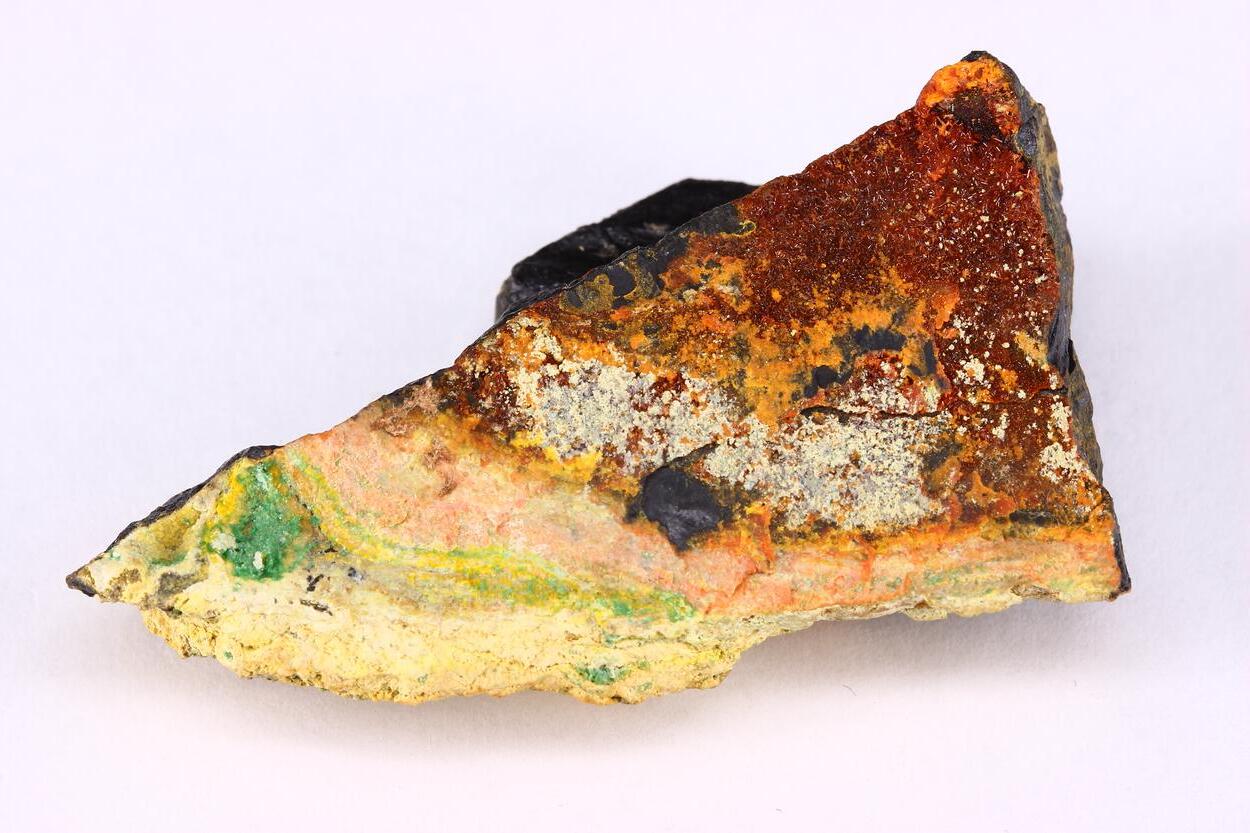
Fourmarierite is a fascinating mineral with a rich history and unique properties. Named after Belgian geologist Paul Fourmarier, this mineral is known for its striking appearance and intriguing characteristics. Fourmarierite typically forms in the oxidized zones of uranium deposits, making it a mineral of interest for both geologists and collectors. Its vibrant yellow to orange-red color and crystal structure make it easily recognizable. But what makes Fourmarierite truly special? Fourmarierite is not just a pretty face; it has a complex chemical composition that includes uranium, lead, and oxygen. This mineral also plays a role in understanding the geological processes that occur in uranium-rich environments. Whether you're a seasoned mineralogist or just curious about the natural world, these 30 facts about Fourmarierite will surely pique your interest.
Key Takeaways:
- Fourmarierite is a rare, radioactive mineral with a distinctive yellow to orange-red color. It's important for studying uranium deposits and has unique properties valuable for research and education.
- When handling Fourmarierite, protective gear and proper storage are crucial due to its radioactive nature. It's essential for understanding uranium minerals and their environmental impact.
What is Fourmarierite?
Fourmarierite is a rare mineral named after Belgian geologist Paul Fourmarier. It belongs to the uranium mineral family and is known for its unique properties and striking appearance. Let's dive into some fascinating facts about this intriguing mineral.
Physical Characteristics of Fourmarierite
Understanding the physical attributes of Fourmarierite helps in identifying and studying this mineral.
- Fourmarierite typically appears in yellow to orange-red colors, making it visually distinctive.
- It forms tabular crystals that can be either elongated or flattened.
- The mineral has a vitreous to pearly luster, giving it a shiny appearance.
- Fourmarierite has a hardness of 3.5 to 4 on the Mohs scale, making it relatively soft.
- It exhibits perfect cleavage in one direction, meaning it splits easily along a flat plane.
- The mineral's specific gravity ranges from 5.5 to 6.5, indicating it is quite dense.
Chemical Composition and Structure
The chemical makeup and structure of Fourmarierite are crucial for understanding its formation and properties.
- Fourmarierite's chemical formula is Pb(UO2)4O3(OH)4·4H2O, indicating it contains lead, uranium, oxygen, and water.
- It belongs to the oxide mineral class, specifically the uranyl oxide hydroxides.
- The mineral's structure includes layers of uranyl ions (UO2)2+ bonded with oxygen and hydroxide groups.
- Fourmarierite often forms as a secondary mineral in the oxidation zones of uranium deposits.
- It is radioactive due to its uranium content, requiring careful handling and storage.
- The mineral can alter to other uranium minerals over time, such as schoepite or metaschoepite.
Occurrence and Locations
Fourmarierite is found in specific geological settings and locations around the world.
- The mineral is typically found in uranium-rich environments, such as hydrothermal veins and pegmatites.
- Notable locations for Fourmarierite include the Democratic Republic of Congo, where it was first discovered.
- It is also found in the United States, particularly in the states of Colorado and Utah.
- Other countries with Fourmarierite deposits include Germany, France, and Canada.
- The mineral often occurs alongside other uranium minerals like autunite, torbernite, and uranophane.
- Fourmarierite can be found in association with lead minerals, such as galena and anglesite.
Uses and Significance
While not widely used commercially, Fourmarierite holds significance in various fields.
- The mineral is primarily of interest to collectors and researchers due to its rarity and unique properties.
- It serves as a geological indicator of uranium deposits, aiding in mineral exploration.
- Fourmarierite is studied for its radioactive properties, contributing to research in nuclear science.
- The mineral's distinctive appearance makes it a valuable specimen for educational purposes.
- It provides insights into the geochemical processes that form uranium minerals.
- Fourmarierite can help in understanding the environmental impact of uranium mining and processing.
Safety and Handling
Due to its radioactive nature, Fourmarierite requires careful handling and storage.
- Handling Fourmarierite requires protective gear, such as gloves and masks, to avoid direct contact.
- The mineral should be stored in lead-lined containers to shield against radiation.
- It is important to limit exposure time when working with Fourmarierite to reduce radiation risk.
- Proper ventilation is necessary when handling the mineral to prevent inhalation of radioactive particles.
- Fourmarierite specimens should be kept away from living spaces to minimize radiation exposure.
- Disposal of Fourmarierite must follow regulatory guidelines for radioactive materials to ensure safety.
The Final Word on Fourmarierite
Fourmarierite, a rare and fascinating mineral, has captured the interest of geologists and collectors alike. Its unique properties, including its vibrant yellow color and radioactive nature, make it a standout in the world of minerals. Found primarily in the Democratic Republic of Congo, this mineral is named after the Belgian geologist Paul Fourmarier. While it’s not something you’d want to keep on your nightstand due to its radioactivity, Fourmarierite plays a crucial role in scientific research, particularly in understanding uranium deposits.
Whether you're a geology enthusiast or just curious about the natural world, Fourmarierite offers a glimpse into the complexities of mineral formation and the Earth's geological history. So next time you hear about this intriguing mineral, you'll know a bit more about what makes it so special. Keep exploring and stay curious!
Frequently Asked Questions
Was this page helpful?
Our commitment to delivering trustworthy and engaging content is at the heart of what we do. Each fact on our site is contributed by real users like you, bringing a wealth of diverse insights and information. To ensure the highest standards of accuracy and reliability, our dedicated editors meticulously review each submission. This process guarantees that the facts we share are not only fascinating but also credible. Trust in our commitment to quality and authenticity as you explore and learn with us.
